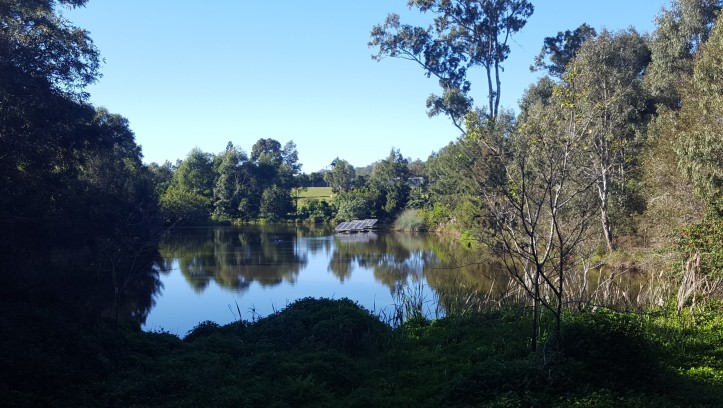 I didn’t know that I was walking in the footsteps of giants. Right here where I stood on the slopes below Seventeen Mile Rocks Road in Brisbane’s western suburbs. This was where the first flight of a Queensland-built biplane glider took place more than a century ago.
I didn’t know that I was walking in the footsteps of giants. Right here where I stood on the slopes below Seventeen Mile Rocks Road in Brisbane’s western suburbs. This was where the first flight of a Queensland-built biplane glider took place more than a century ago.
A soft breeze touched my face with a 12-degree crispness of the perfect blue sky and sunshine of a Queensland winter. Modern solar panels silently stood to attention in the mirrored water from which a Royal Spoonbill launched and glided past. She represented the biplane’s launch here 107 years ago, down a wooden rail, on a cradle, before becoming airborne.
Major Tom Macleod was one of Australia’s pioneering aviators. He was born in Brisbane in 1881, his father was master at Brisbane Grammar School, and Monday would be his 136th birthday. It was he who stood where I am now.
He built and flew in 1910 the first heavier-than-air biplane glider constructed in Queensland, with an adjustment to the Wright brothers’ design of seven years earlier.
That same year, he was a founder of the Royal Queensland Aero Club which remains one of the world’s oldest aviation organisations, and the oldest in the southern hemisphere. The club later had many well-known members including Sir Charles Kingsford Smith, the first man to fly from the United States to Australia, and Bert Hinkler, the first to fly from England to Australia. It’s where I did my own early flying.
Macleod trained Queensland pilots who flew in the Royal Flying Corps over the trenches in the First World War. He himself served as an aerial observer and was awarded the Croix de Guerre avec Palme, and the Order of the British Empire.
He was one of the early directors of Qantas. The papers forming the company were signed in Brisbane’s Gresham Hotel in 1920 when my uncle’s uncle was manager there. In Longreach in 1928, Macleod married the daughter of the 9th Earl of Carlisle. The monument in the park in which I now stood was erected in 2010 to commemorate the 100th anniversary of his first flight.
Macleod is perhaps largely forgotten in Australia today because as his health failed, he went ‘home’ to Par, a little village and fishing port on the south coast of Cornwall, England. He passed away there in 1963 aged 82.
Today I was on a training walk to prepare to retrace the footsteps of Bernard O’Reilly who 80 years ago this year became an Australian national hero. He found in the nearby rugged McPherson Range the crash site of a Stinson aircraft lost for 10 days, and so saved the lives of two of the crash survivors. I’m doing it to raise money for Drug ARM Australasia and its effort to reduce the harms of alcohol and other drugs. This morning was a pleasant and unexpected reminder of that early Australian aviation history.

Nice article Harold
LikeLiked by 1 person
Thanks Mark. It’s amazing what you find in everyday places, simply by being inquisitive.
LikeLike
That must have felt good. Good luck with the walk.Love Mum.
Sent from the Samsung tablet lovingly given by Harold, Jacqueline, Harold, and Murray
LikeLiked by 1 person
Thanks Mum. It was a beautiful morning too.
LikeLike